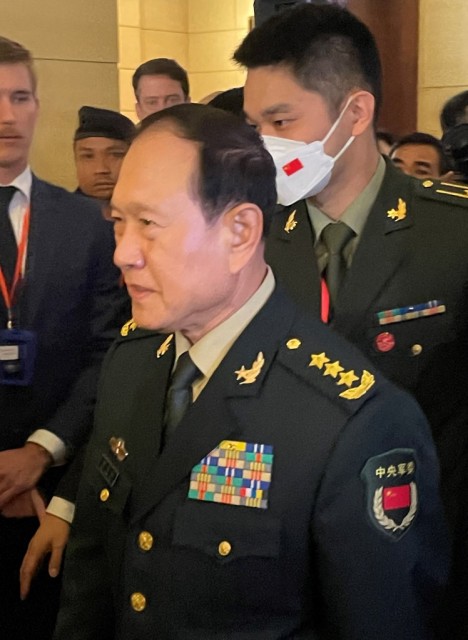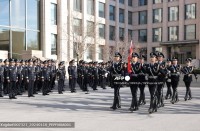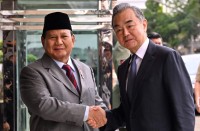
by W.G. Dunlop
Agence France-Presse
SIEM REAP, Cambodia (AFP) — US Defense Secretary Lloyd Austin met his Chinese counterpart Wei Fenghe in Cambodia on Tuesday as the two sides move to keep tensions in check.
The meeting on the sidelines of a conference of defense ministers in Siem Reap — which lasted for an hour and a half — was the first between Austin and Wei since June, before a visit by US House Speaker Nancy Pelosi to Taiwan sparked fury in Beijing.
But China and the United States have since sought to lower the temperature with meetings between top officials, and a senior US defense official characterized the talks between Austin and Wei as “productive” and “professional”.
“Both sides agreed that it’s important that our countries work together to ensure that competition does not veer into conflict”, but “competition remains the defining feature of the relationship”, the official told journalists.
Austin sought the “reopening of a number of military-to-military dialogues and mechanisms to help manage that competition responsibly”, the official said, referring to steps that were scrapped by Beijing following Pelosi’s visit.
The two sides “agreed on the importance of restarting a number of these specific mechanisms that they discussed, and we’ll look forward to seeing those implemented in the months ahead.”
The Austin-Wei talks came after Joe Biden and Xi Jinping met for three hours at a Group of 20 summit in Bali on November 14, the first in-person talks between the leaders of the world’s two largest economies since they each became president.
That was followed by a meeting between Xi and US Vice President Kamala Harris at an Asia-Pacific summit in Bangkok.
In August, Taiwan announced plans for a record increase to its defense budget after China conducted huge military drills in response to Pelosi’s visit to Taipei.
Taiwan lives under constant threat of invasion by China, which claims the democratic island as part of its territory to be seized one day — by force if necessary.
– ‘Lengthy exchange’ on Taiwan –
Beijing lashes out at any diplomatic action that might lend Taiwan legitimacy and has responded with growing anger to visits by Western officials and politicians.
For a week after Pelosi’s visit, China sent warships, missiles and fighter jets into the waters and skies around Taiwan, its largest and most aggressive exercises since the mid-1990s.
Austin and Wei had a “lengthy exchange” on Taiwan, the senior US official said.
“The secretary reiterated the point that US policy toward Taiwan has not changed, that the United States continues to oppose unilateral changes to the status quo, and that the United States will continue to fulfill its commitments under the Taiwan Relations Act.”
The legislation, which was passed by Congress in 1979 when the United States switched recognition from Taipei to Beijing, requires Washington to provide weapons to Taiwan for its self-defense.
Beijing has increased military pressure on Taiwan in recent years, particularly with incursions into the island’s air defense identification zone.
Last year, Taiwan recorded incursions by about 970 Chinese warplanes into its air defence zone, according to a database compiled by AFP, more than double the roughly 380 in 2020.
Activities by Chinese military aircraft around Taiwan were raised by Austin in the talks with Wei, the US official said.
“Secretary Austin also voiced concern about a pattern of unsafe or risky PLA air intercepts as an area of particular concern, and they ran through a number of regional issues including” Russia and North Korea.
© Agence France-Presse







